When Art, Fashion and Music Collide
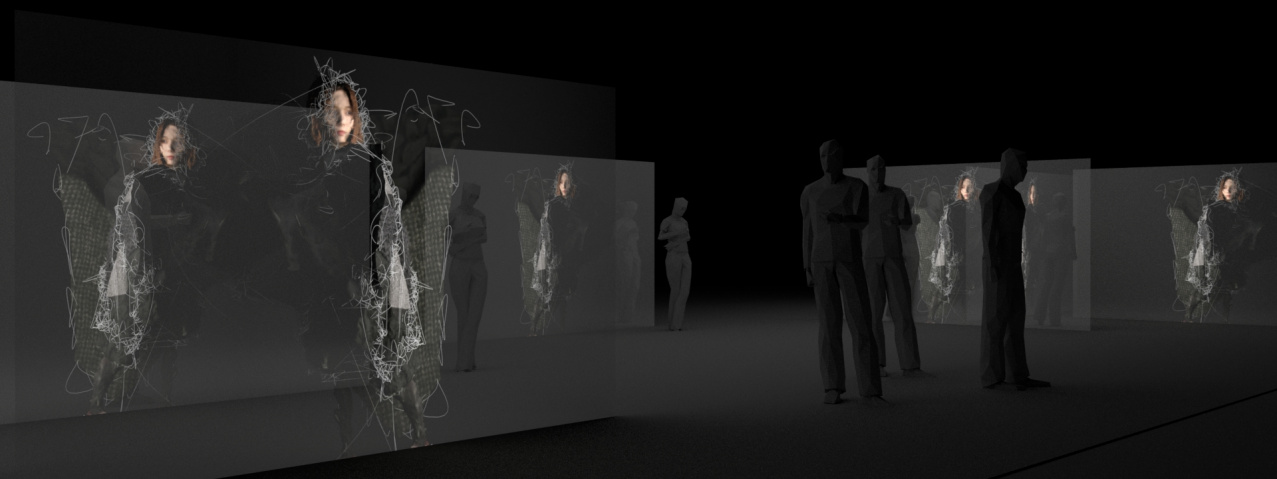
Osage Art Foundation and Hong Kong Design Institute have joined forces to create an innovative platform for artists and designers to showcase their work while benefitting from unique opportunities for interdisciplinary collaboration
Lights. Sound. Fashion. HK|Runway, the first show of its kind in Hong Kong, allowed emerging local artists and designers working across all disciplines to experiment with alternative methodologies and showcase fashion in the most imaginative and creative ways. Audiences were dazzled by gorgeous ready-to-wear pieces and haute couture that crossed seamlessly from commercial to experimental, all presented in a theatrical style.
Co-organised by Osage Art Foundation and Hong Kong Design Institute, the multi-disciplinary project held between January 17 and 22 at Osage Gallery in Kwun Tong, merged the realms of fashion, design, art, dance, architecture and technology.
Agnes Lin, Osage Gallery’s founder and director, discussed how she hopes this six day event will be the first in a series encouraging artists to create, while connecting them with supportive businesses: “Part of the aim of HK|Runway was to blur lines between what is considered an art exhibition and fashion show and to avoid categorisation both in the making and reception of the works.”
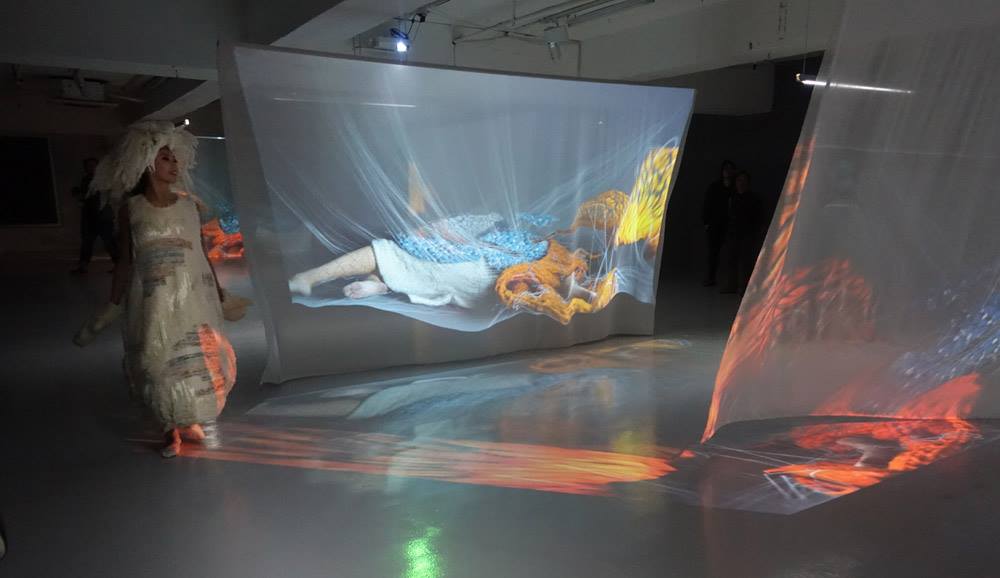
|
A core purpose of HK|Runway was to encourage creative synthesis. Lin explains: “We also wanted to experiment with the curatorial methods for an exhibition or performance, and really let the interactions between each element be organic in their response to each other. So each dancer, designer and artist had autonomy to form their contribution, which would be part of the whole.” Lin argues that fashion has traditionally been seen as being divided between ready-to-wear and haute couture, adding that it is becoming increasingly common for designers and brands to successfully straddle both the commercial and experimental aspects of fashion design in a |
While HK|Runway was a transdisciplinary event where both fashion and art met, the two disciplines already share a significant amount of common ground. Lin states: “Fashion always has to negotiate relationships with the body, which art also deals with but often very differently. In this sense, we hoped that practitioners in each discipline would open up the possibilities for the other.” HK|Runway was a highly experimental project, but it is not entirely unexplored territory for Osage Art Foundation. HK|Runway emerged from Osage’s ongoing threads of research and building on experience from earlier projects. These included Siren, Sigma Square and HK|ACT. 2007’s Siren incorporated music and dance with new media works and innovative display technologies. The project was an experimental platform, involving practitioners from different disciplines, creating new artworks and forging new collaborations. |
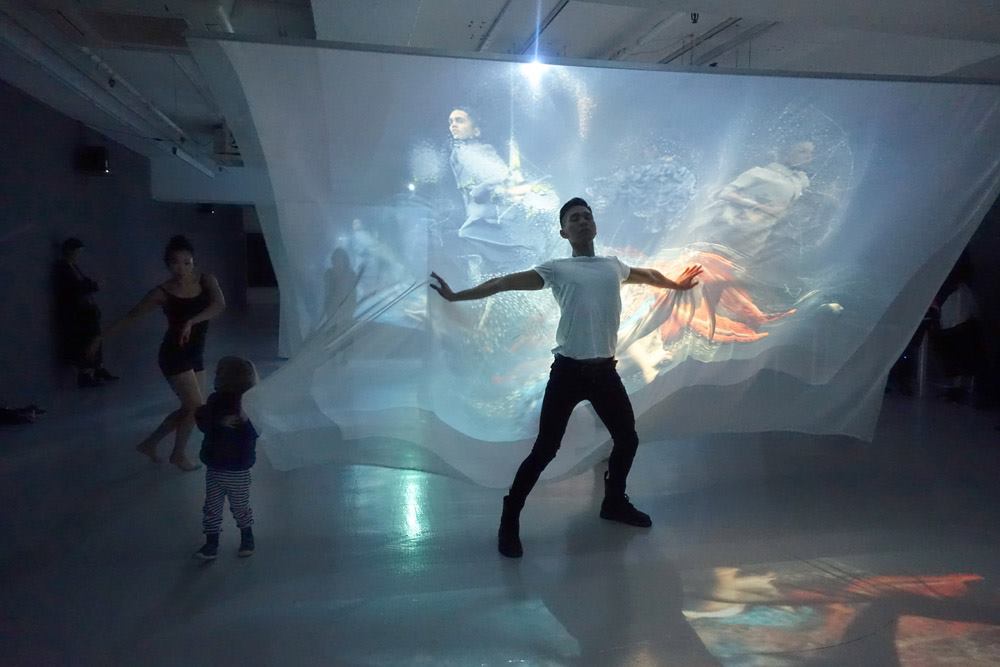
|
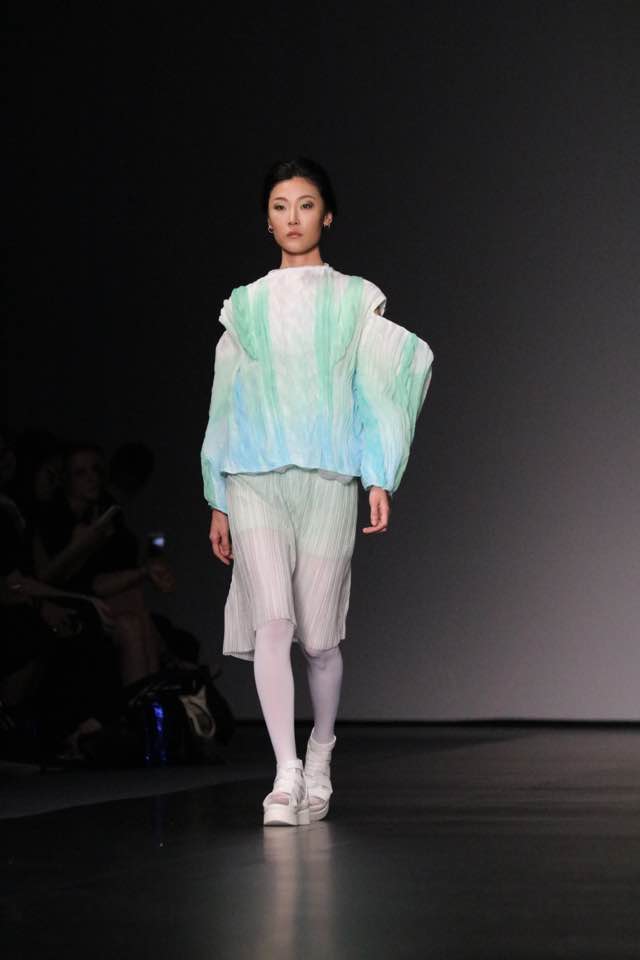
|
Osage Art Foundation also has experience with developing alternative art market models, exploring the way artworks are valued and experimenting within the exchange systems surrounding art. Sigma Square, which took place throughout 2012 and 2013, was a pop-up market where young artists, designers and musicians presented and sold works in an informal setting. The works featured in the project ranged from toast that referenced Modern artworks, to transportable homegrown wheatgrass juice stands. HK|Runway is also indebted to Osage Art Foundation’s HK|Act as a source of inspiration. HK|Act included elements of public art and live art that were incorporated into the event. With HK|Runway Osage Art Foundation turned its attention to fashion design while bringing together the themes of cutting-edge technology, interdisciplinary contributions, experiential works and alternative commercial art market models. All themes explored on earlier projects; but now on a much larger scale. |
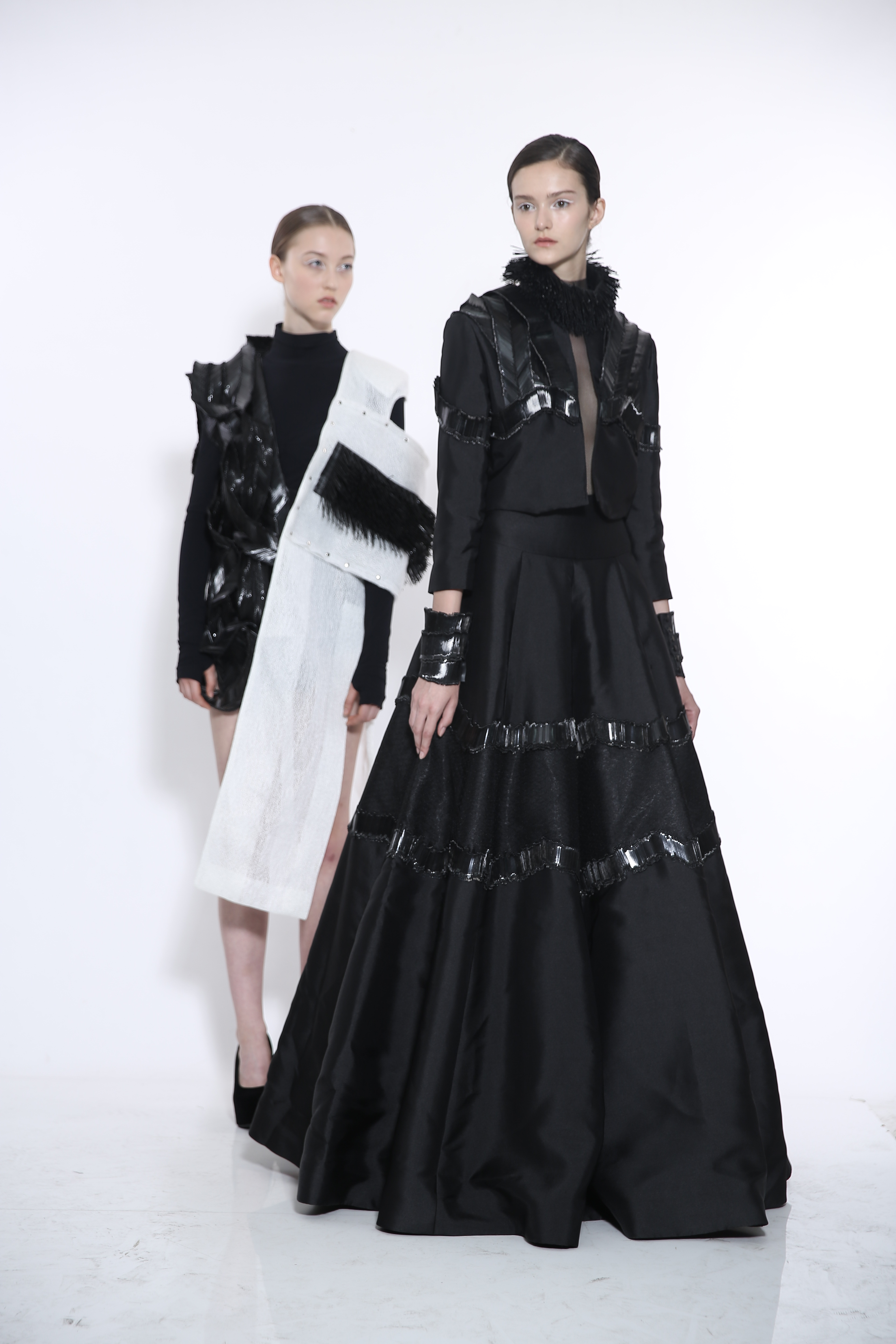
|
The project was, to a great extent, inspired by the designs of HKDI’s graduating students as well as the work of artist-designer Tobias Gremmler, who developed the scenographic design of the event. Gremmler’s scenography captured, analysed and revisualised the movement of the HK|Runway models using a combination of technologies and methods from different disciplines. According to Lin, “The scenographic design took the form of a continuous sequence of spatial and visual fields of light.” These morphing projections transformed the fashion show so that it operated like a constantly changing pop-up boutique. Gremmler’s scenography was accompanied by music curated by Giorgio Biancorosso and composed by Chan Sze-Rok, adding another level of experience to the overall play of movement, light and fashion sequencing. Prolific Hong Kong artist and designer Stanley Wong (AKA anothermountainman) played a part in the planning of HK|Runway, choosing the designs to be included in the show. While Wong had a very large pool of talent to choose from, Lin explains that Wong took a systematic approach to the selection process; “The designs displayed were chosen based on this idea of blurring high fashion and everyday fashion as well as on the consideration of how each of the designs would interact with other, with the dance and the music.” |
While Hong Kong’s fashion industry is usually seen as responding to global trends rather than leading them, HK|Runway aims to promote innovation and originality. Lin explains that: ”By providing a platform for new original designs that exist in the realms of art, fashion, dance and music, we hope to be able to create a space where artists and designers can afford to be experimental, where ideas can cross pollinate and where designers can be supported in their creative expression.” To this end, HK|Runway differs significantly from a traditional fashion show. While traditional fashion shows incorporate elements of visuals and music along with fashion design, they usually come in a standard format where you immediately know where and what to look at. Lin explains: “HK|Runway opened up those elements so that each would speak for itself, while also being enhanced by the other elements. The result was somewhat theatrical with the narrative being dictated by the fashion design.” According to Lin we can expect further similar projects to come from Osage Art Foundation: “We plan on taking the lessons learned and the ideas gained in the creation of this project to further develop other possibilities. The response we got from the designers was encouraging for us to continue to develop the platform in this direction.” Many of HK|Runway’s participants found that the interdisciplinary contributions enabled by the project helped them to see possibilities and interpretations that they hadn’t previously seen in their own designs. Even after the event has finished, it is hoped that these new collaborative relationships will continue to bear fruit. |
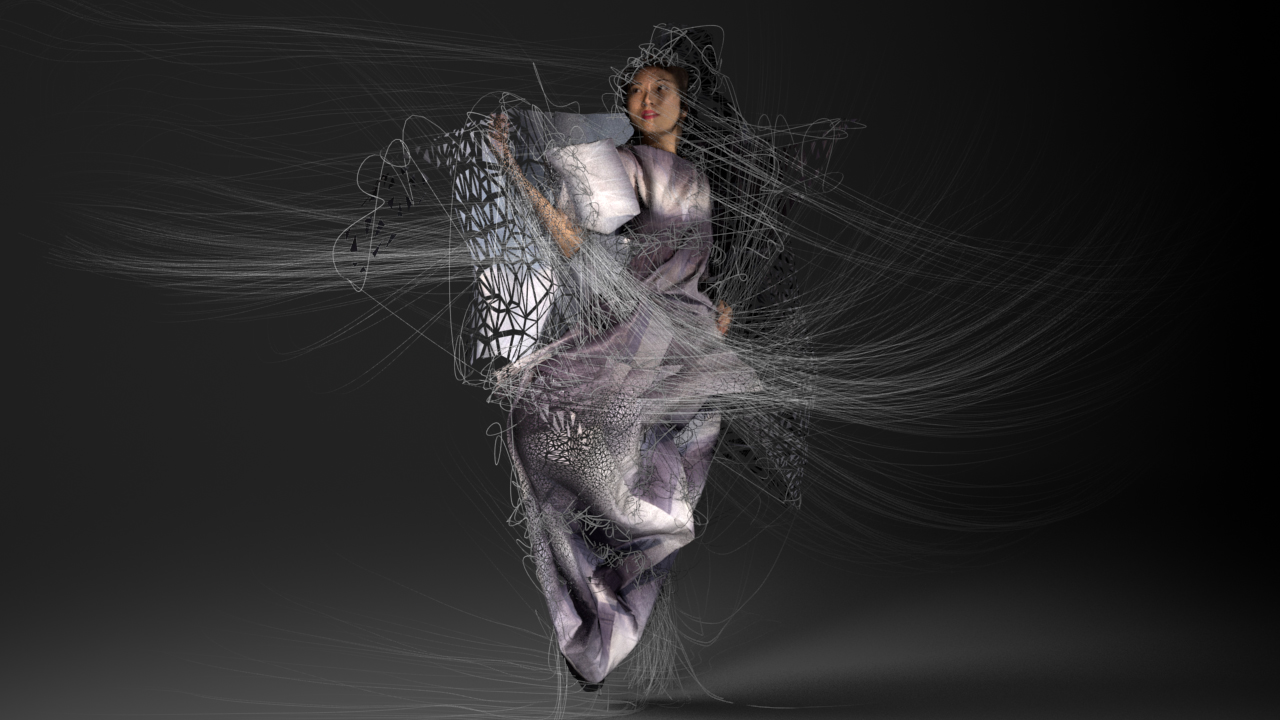
|
Others
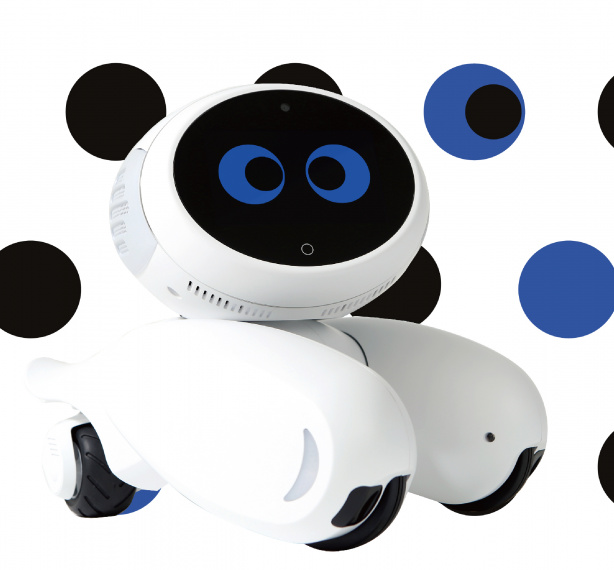
最新動態 | 1 September 2017
Robot Society

最新動態 | 1 September 2017
We need to talk about 'Tesign' - Design starting with Tech

最新動態 | 1 September 2017
Game Changers

最新動態 | 1 September 2017
Hyper-reality

最新動態 | 1 September 2017
Battery Power
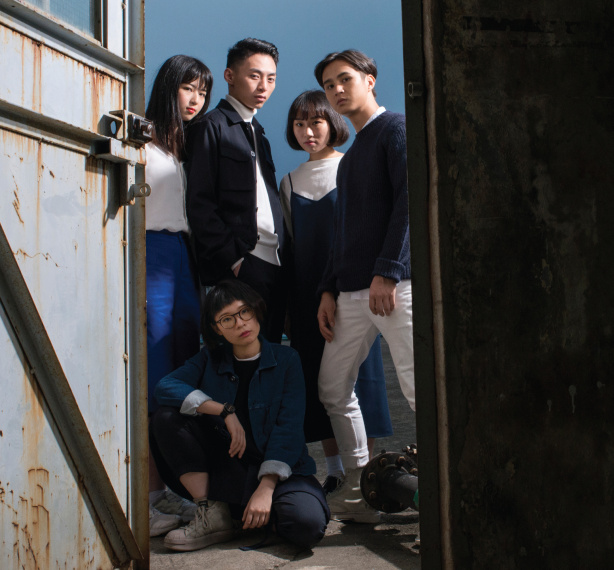
最新動態 | 1 September 2017
Designers Making a Difference
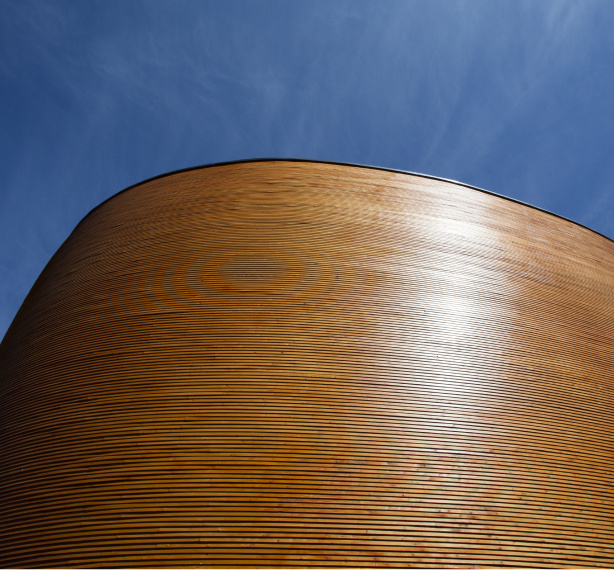
最新動態 | 1 September 2017
Small City, Big Data
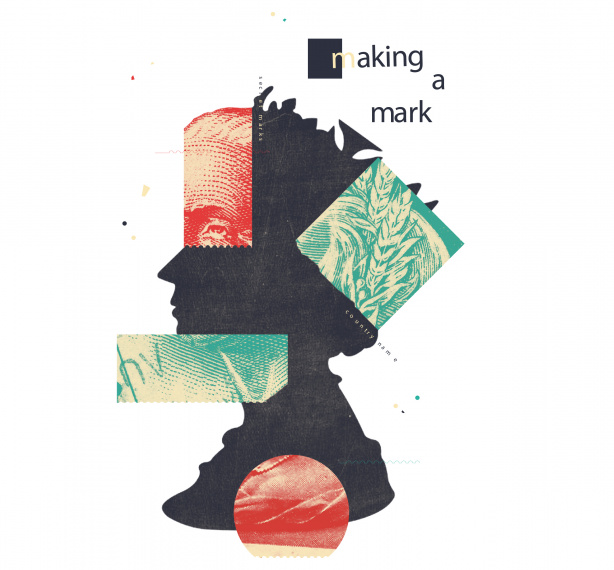
最新動態 | 1 September 2017
Making a Mark

最新動態 | 1 September 2017
